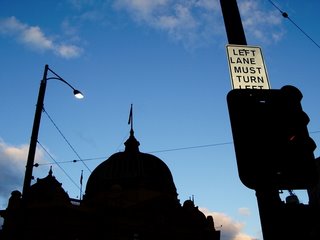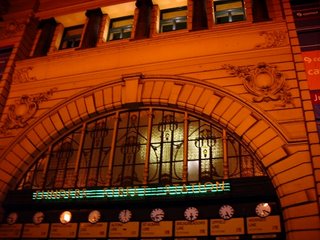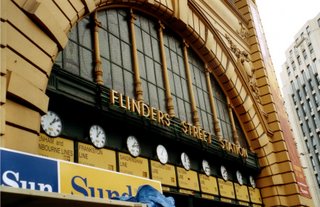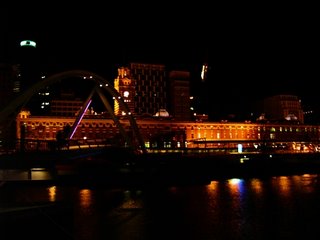
This is the famous dome of Flinders Street station, the hub of Melbourne's train system. I shot this picture on a freezing morning, with the dome and a set of traffic lights silhouetted against an icy-blue sky.
 Photo copyright: DAVID McMAHON
Photo copyright: DAVID McMAHON
This was shot inside the station, under the huge cupola. This graceful arch, across the main entrance, spans the famous clocks showing the times of the trains on the various lines that serve this amazing city.

Photo copyright; DAVID McMAHON
And this picture was shot from just outside the station. These clocks are literally a part of the city's heritage, because in the days before mobile phones, people simply used to arrange to meet ``under the clocks''. I guess you could say that was a case of time standing still.

Photo copyright: DAVID McMAHON
And this shot was taken inside the station, showing the recently refurbished roof and the graceful lines, reminiscent of the colonial era, of the station's interior. I have showed this picture to a lot of my friends who commute regularly through Flinders Street station and most of them said they had never looked up to take notice of the amazing roof.
 Photo copyright: DAVID McMAHON
Photo copyright: DAVID McMAHONAnd finally, this shot was taken on the south bank of the Yarra, just to give you an idea of the station's size, stretching an entire city block. Its distinctive glow in the dark is a comfortingly familiar sight to Melburnians, as is the reflection in the chilly waters of the Yarra, the other great landmark of the city.




 Lt. Col Raj Rathore at Lilydale. Photo copyright: DAVID McMAHON
Lt. Col Raj Rathore at Lilydale. Photo copyright: DAVID McMAHON